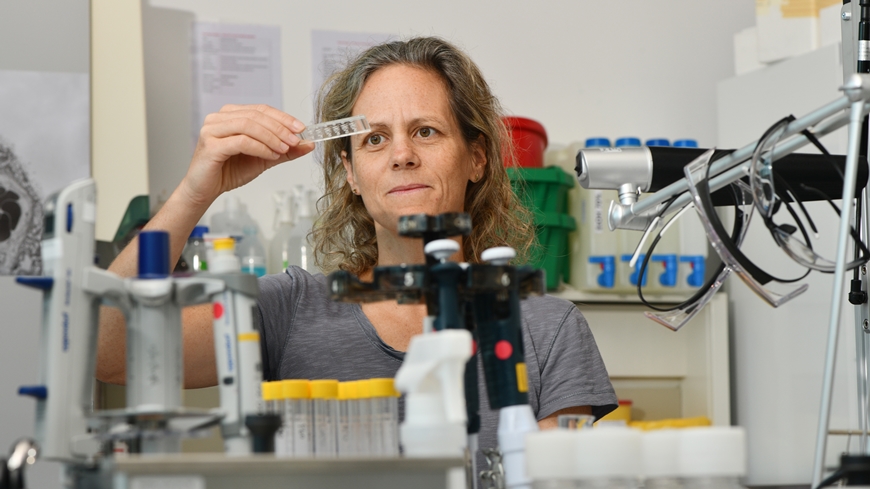Tokyo (SCCIJ) – Researchers from the Swiss Federal Laboratories for Materials Science and Technology (Empa), the Swiss Federal Institute of Technology in Zurich (ETHZ), and the St.Gallen Cantonal Hospital are jointly developing an alternative to animal testing for embryo research. Their “medical chip” could significantly reduce the number of animal experiments.

Tina Bürki sees the placenta-embryo chip as the future for developmental toxicity tests (© Empa).
Safety research
The research investigates what happens if a substance manages to penetrate the natural barrier between baby and mother, the placenta, in the body of pregnant women. Such studies on the developmental toxicity of drugs and environmental toxins currently rely on experiments with pregnant mice. In the EU, for example, 840,000 animals were used in toxicity and safety research in 2017, of which nearly 100,000 were used for developmental toxicity.
The team from Empa and ETH Zurich has been working for some time on the question of how this embryotoxicity of substances can be determined precisely, simply, and reliably. Now the team is developing a new system that will detect embryo-damaging substances without the need for animal testing. At the heart of the process is a polymer chip.
Realistic conditions
About the length of a human finger, the chip houses a small universe: Human cells grow on the chip that is to model the placental barrier and the embryo under conditions that are as close to reality as possible. For this purpose, cells of the placenta are cultivated on a porous membrane to form a dense barrier, and embryonic stem cells are formed into a tiny tissue sphere in a drop of nutrient solution.
“We already know that such a test system can work, as a simplified prototype was developed during a preliminary study with the Bio-engineering lab at ETH Zurich,” says Tina Bürki, Empa researcher at the Particles-Biology Interactions lab in St. Gallen.
What is special about this new chip is that the researchers want to improve the cell models by replacing the previously used laboratory cell lines or mouse cells with so-called primary human cells and a human stem cell line. “We are working closely with the gynecological clinic of the Cantonal Hospital of St. Gallen and can isolate the cells we are looking for from placental tissue that would otherwise be discarded after birth,” Bürki explains.
Precise examination
The team wants to use the cells to develop an improved three-dimensional placenta model. Ultimately, the embryo-placenta chip will allow the reproduce the interaction of the placenta and embryo and investigate the effects of a substance on embryonic development.
The new test system is intended as a simple and precise way to check the safety of a substance early in the development of new drugs and thus accelerate the application of new therapies. In this way, the chip supports the safe-by-design principle, which envisions the early integration of safety aspects into the innovation process.
Text: Empa (editing by SCCIJ)





























